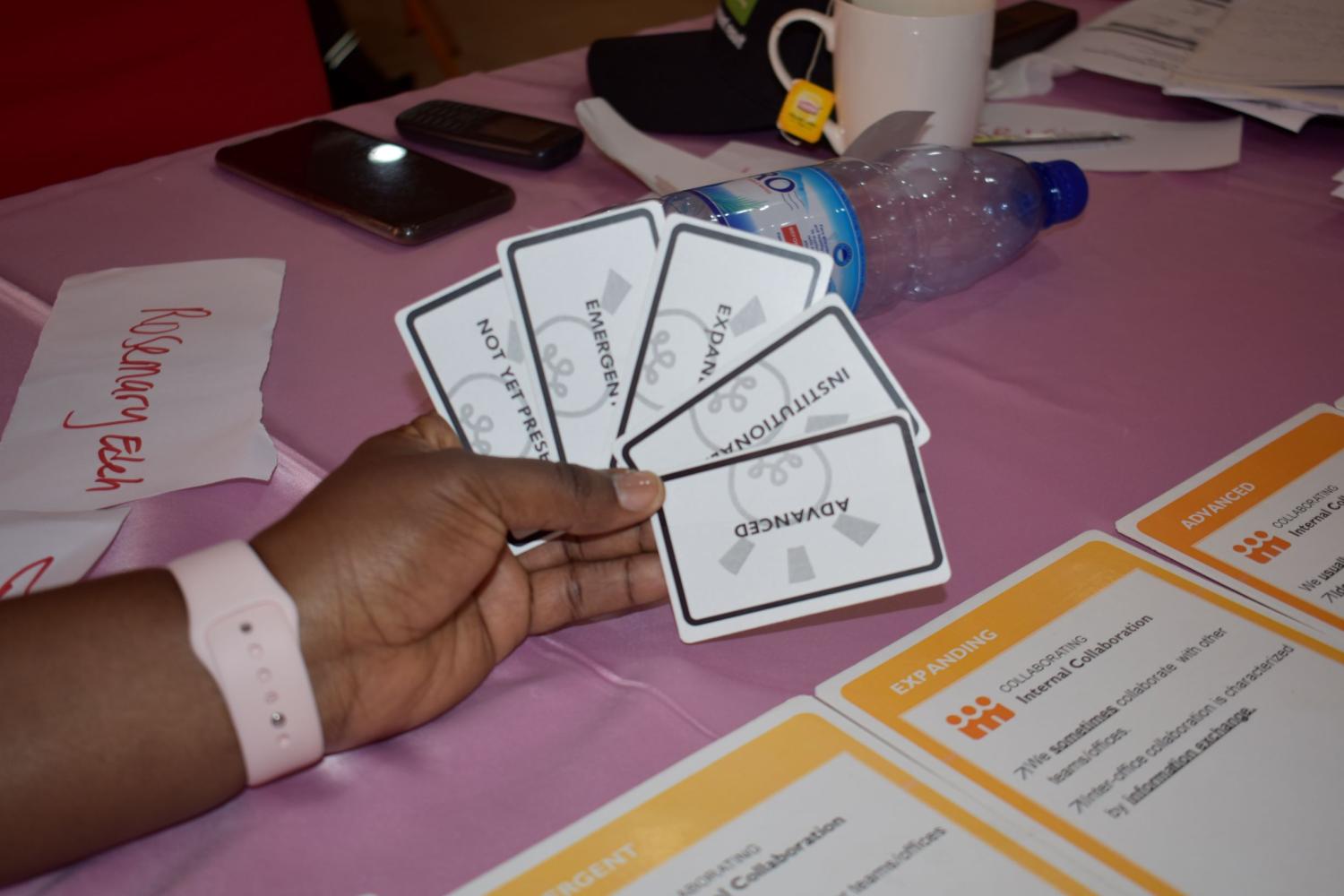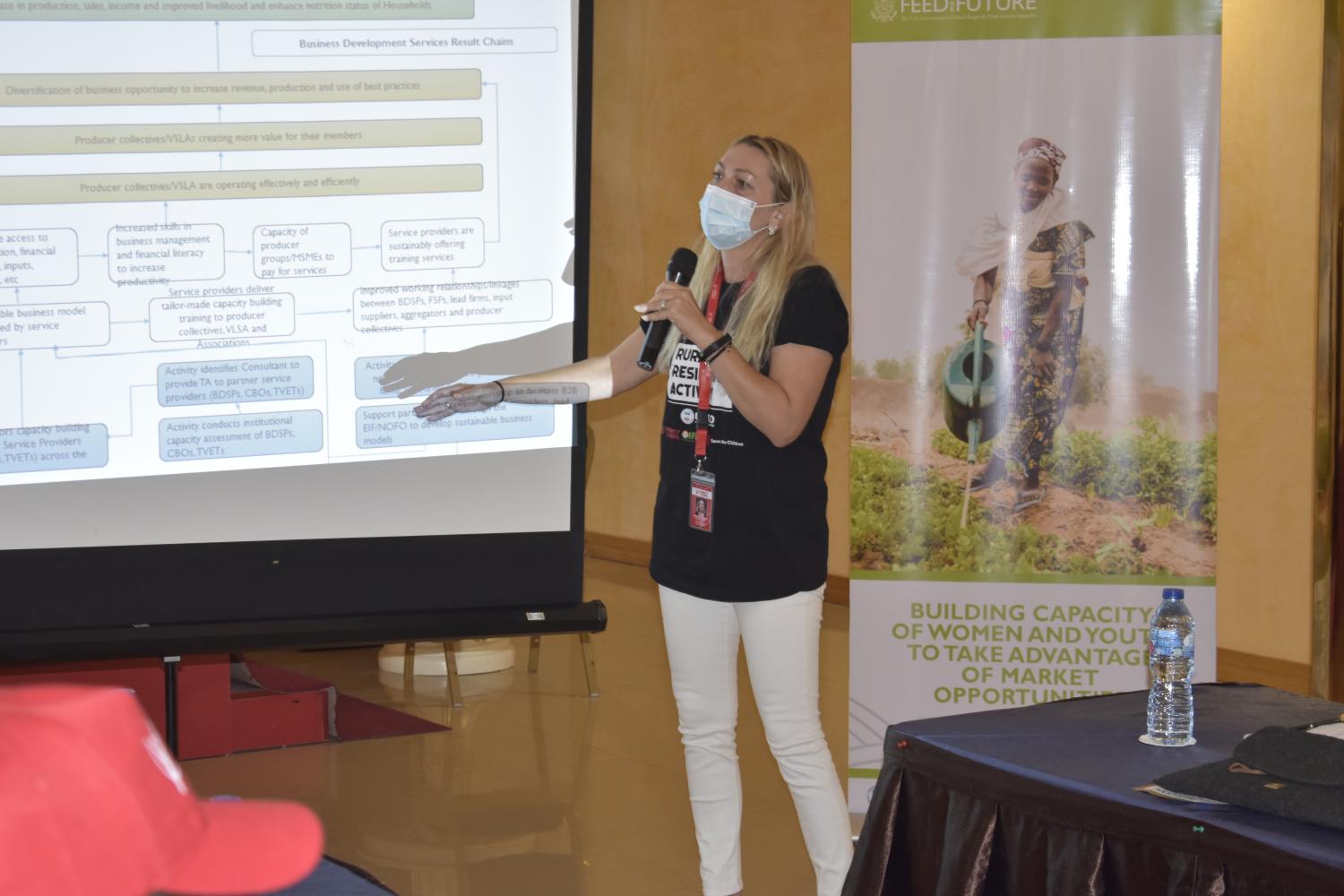Integrating the CLA Approach in the Rural Resilience Activity in Nigeria
This blog considers the following questions on how the Feed the Future Nigeria Rural Resilience Activity integrated CLA practices to help improve the Activity's effectiveness and efficiency.
What does Collaborating, Learning and Adapting (CLA) look like in the real world and how did it make our work as effective as possible, and thereby improve impact? What were those key activities across the CLA framework that we implemented during fiscal year 2022? What key learning questions helped in decision-making? How did we build a culture of openness, continuous learning, and improvement? How did we structure discussions in our pause and reflect workshops that enabled the team to learn?
In fiscal year 2022 (FY22), Collaborating, Learning and Adapting (CLA) was central to Feed the Future Nigeria Rural Resilience Activity's (RRA) purpose. RRA piloted a large set of interventions given that there was a significant delay in implementation for the first two years. As we routinely interacted with all stakeholders, learned from evidence and experience, and iteratively adjusted to unanticipated results and changes in the operational context, CLA provided a framework for that evidence-based planning and implementation. Given that the Activity strengthened adaptive management in FY22, we understood that inaccurate information might exist at the start of a program and that we needed to take complexity and unpredictability into account—something that is especially important in northeast Nigeria.
The secret to CLA was creating an environment where all staff members felt comfortable asking questions, engaging in deliberate experimenting, being open to failing, and debating strategies. With this, the team was able to reduce risk and take advantage of opportunities to make a difference in the face of complexity. Partners implement and track the outcomes of the interventions in close collaboration with intervention leads and the Monitoring, Evaluation and Learning (MEL) team. This is done through regular communication, evaluation of performance-based milestones, bringing in suggestions, and additional help to solve issues that emerge.
Before the fiscal year began, the Activity organized its annual CLA workshop for its team to increase their knowledge of CLA concepts and practices. It also facilitated the CLA Self-Assessment process to strengthen CLA practices on the Activity using the CLA maturity cards. Further outcomes and follow-on actions from the workshop were to establish a vision, create an action plan, and monitor progress. The workshop discussed how incorporating CLA can guarantee that our program is coordinated with others, based on a solid body of evidence, and continually improved to remain relevant during implementation. Also, necessary resources were committed to making CLA more deliberate and methodical throughout the Program Cycle. The team had the opportunity to learn about the expectations for the year during this session, which was crucial to the start of the year. It's not surprising that the team now has an inquisitive mindset attitude and employs different approaches to work to maximize the Activity's impact.

Collaborating: We established an organizational culture inside the team that values openness, cooperation, and the exchange of knowledge. In northeast Nigeria, we convened a multi-stakeholder platform (MSP) through our private sector partner to make conscious efforts to ensure that interventions were in line with the regional states’ development plans' objectives. The culture of cooperation, knowledge exchange, and learning among market participants, the government, and development partners has improved because of this alignment. The main purpose of this platform is to guide the implementation of high-priority agricultural innovation initiatives that target systemic bottlenecks and opportunities across key value chains, make informed agricultural strategic decisions, and ensure the sustainability of agricultural productivity impacts beyond the grant.
To ensure ownership, support, and sustainability of the activities carried out, we included a participatory approach, with the engagement of numerous stakeholders from government line ministries, the private sector, and CBOs in our implementation. To foster communication, relationship-building, and cooperation with institutions that share similar goals, collaboration meetings between partners within related interventions were held. These meetings allowed for the leveraging of resources, experiences, and learning as well as the creation of synergies between interventions. Additionally, the Activity co-designs and co-creates with the partners, offering technical support on sustainable business strategies and inclusion of cross-cutting themes, as well as support in analyzing the business case for interventions.
Key internal (learning) questions we sought to answer in the year were: Who do we work with? Who should we work with and why? Who offers the greatest opportunity for synergies? How can the various interventions collaborate to achieve better results faster and more effectively? With these questions, we seek to work with the right partner and identify stakeholders who could have the greatest impact on our planning and implementation. We look at collaboration as a shared vision – this means asking what big-picture outcomes we have in common, and how we can work together to achieve a common goal.
Learning: Our learning was guided by a learning agenda, which describes how the Activity’s learning priorities will be pursued throughout project implementation. We took a disciplined and evidence-based approach to learning that guides decision-making and adaptability by designing it and acting on it. We also actively involved the team in designing learning questions relating to the Activity's emerging priorities as a recommended practice in learning. By prioritizing key questions, the learning agenda channels attention toward critical evidence gaps that would limit the ability of the Activity to achieve its stated objectives.
We created probing questions that we aimed to address based on the redesigned program design and Theory of Change. These inquiries were crucial for implementation, but they were also crucial for meeting the sector's informational demands, as well as those of USAID and Mercy Corps. One of the Organizational Learning questions was “How does the current organizational process impact our performance?” This was an underlying issue that focused on our processes and seeking an answer to it and applying the knowledge gained to make decisions and programmatic changes improved the effectiveness of implementation.

We hosted quarterly two-hour meetings within the Knowledge Management Unit (MEL, CLA, and Communications departments) to look at our program data and ask: where do we stand? What can we change? What should we keep doing? What does this data mean in the context of our Activity’s goals? What do these analyses tell us? What lessons do we draw from them? We made sure that these meetings coincided with current deadlines for decision-making to maximize their value. Key internal (learning) questions we sought to answer in the year were: What worked well and why? What did not work well and why? What does RRA need to know to implement the Activity in the northeast efficiently? How can RRA use its internal learning to do things differently?
Adapting: Adaptive management is defined in ADS 201.6 as “an intentional approach to making decisions and adjustments in response to new information and changes in context.” FY22 was a learning year for us. All the analyses, evaluations, data flows, and reflections provide tremendous opportunities for adapting or pivoting in response to what is being learned. This required a systematic approach to managing and sharing information through intentional feedback loops, pausing, and reflecting collectively, and making informed decisions as a result.
Midway in the year was a good time to pause, review data, and ask critical questions about our assumptions, expected results and whether we had the right data to make the decisions we need. During the semi-annual Pause & Reflect Workshop (6 months after implementation), the Activity framed its theme “Evidence of change: Is the market responding to our intervention?” to mirror the deliberate learning for the workshop. The workshop gives the team a chance to openly discuss what is and isn't working, think back on achievements, difficulties, best practices, and lessons learned to improve performance, and coordinate efforts across sectors. The Intervention managers discuss the specific constraints that their intervention is addressing, the methodologies, the progress to date, and the area of concentration for the following quarter through a variety of presentations. Also, the team discussed whether, and to what extent, changes were happening as expected, asked critical questions about the sustainability, scalability, and value of the various models to the participants and market actors, and used the findings from recent information gathered to collectively make informed decisions.
Based on the progress review of each of the interventions presented, with the stated milestones and business case, and evidence from the qualitative and quantitative data presented by the Monitoring & Results Measurement (MRM) unit, the Activity adjusted the 27 interventions to 16 and narrowed 30 indicators to 24 using evidence from the data collected. Some interventions which demonstrated value were scaled, some new interventions were introduced, some were expanded, some were modified, and others were dropped due to limited return on investment. The key lessons learned from the first six months of implementation indicate that the Activity could perform even better by resizing its interventions and indicators.

Additionally, we also used a Pivot Log to highlight changes made in the Activity and their rationale, consistently updating these changes or pivots to report back on what happened because of the change. CLA and Reflection Workshops, semi-annually and annually, were an ideal opportunity for updating the Pivot Log with new changes, reporting back on earlier pivots, challenging suggested changes, and reinforcing the need for evidence both preceding and after any pivots. Documenting these reflections, decisions, and adaptations is also critical, both for internal tracking and accountability purposes, and to share across partners, within organizations, with USAID, and among other implementers and donors.
Finally, the key to RRA’s overall approach was to embedding CLA throughout implementation. This approach – and an adaptive management mindset – drove the team to ask and answer the questions of what, why, how, when, and with whom; take an evidence-based approach to decision-making, adapt programming, and share knowledge. Robust monitoring, evaluation, and learning supported the CLA agenda and framework and allowed the team to make quick, tactical adjustments to approaches, partners, and interventions.




